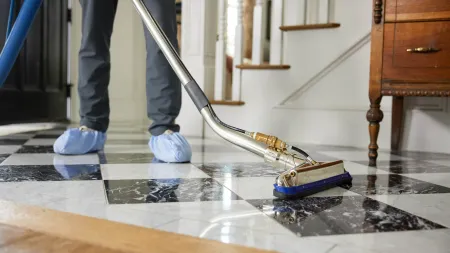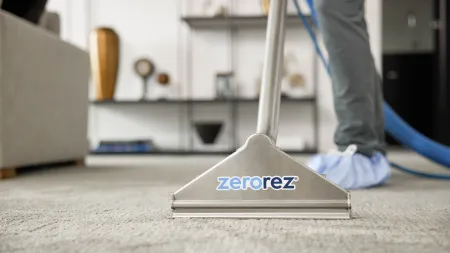Ceramic or Porcelain Tile Flooring: What's the Difference & How to Choose
Both ceramic and porcelain are rigid clay-based and kiln-fired tiles. Their differences lie in water and stain resistance ability, durability, ease of installation, and cost. Porcelain's low water absorption rate is about 0.5 or less, meeting the set water absorption rate standards.
Ceramic's water absorption rate is 0.5 or more, and it's made from coarse clay. Porcelain is finer, absorbs less water, and is made under higher firing temperatures, making it more expensive.
That does not mean porcelain is better than ceramic! Each home's needs vary, and so does the choice of tiles based on the room's temperature, the substrate being tiled onto, traffic level, and the tile use.
Determine which tile is best for you by reading further.
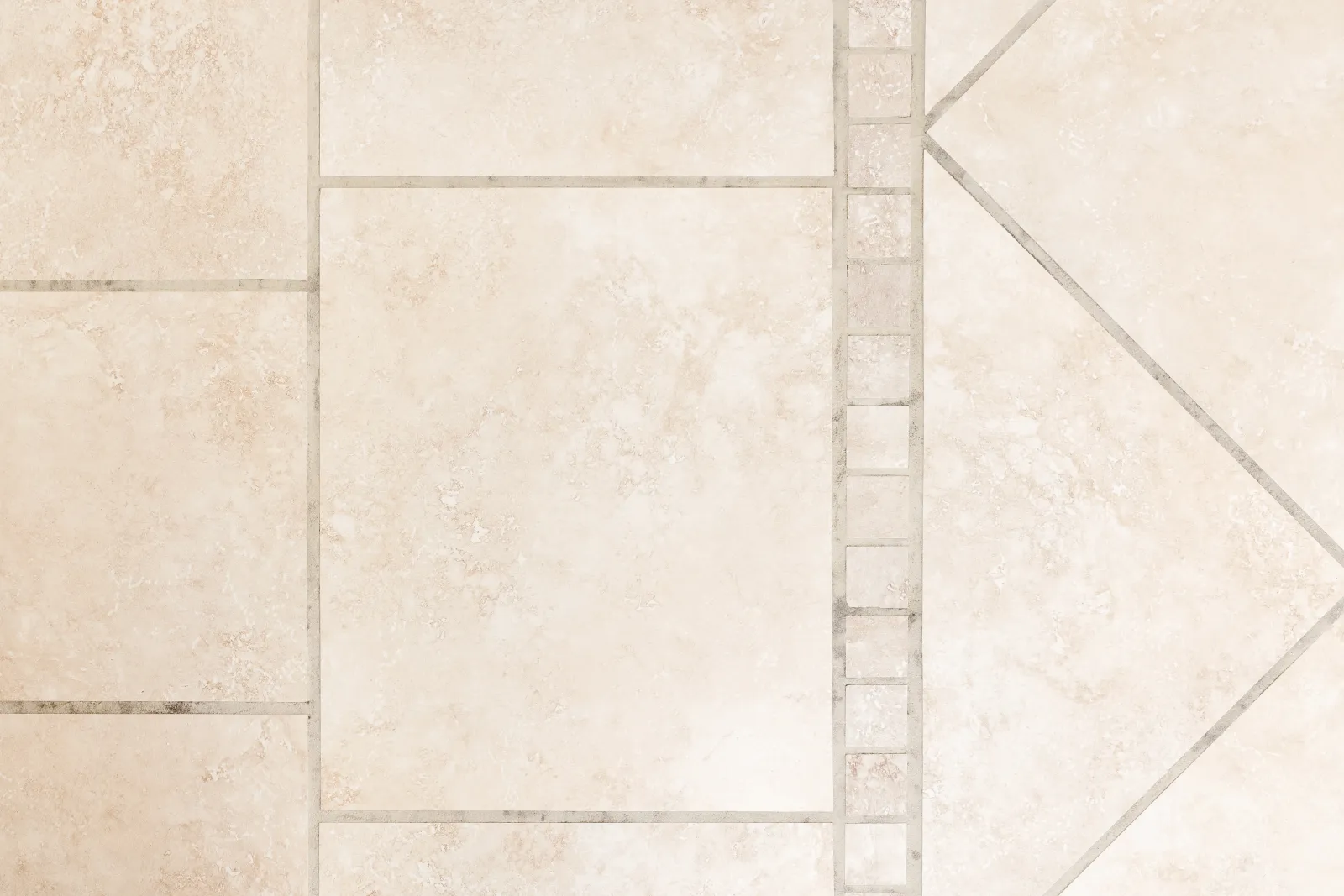
What Is a Porcelain Tile?
Porcelain is made of refined clay, fine grain, and other minerals. This mixture is shaped, pressed, and fired at temperatures between 2,200 and 2,500 degrees Fahrenheit.
The firing process results in a hard, dense material that is durable and resistant to water, scratches, and stains.
Porcelain is best for cold places where freezing and thawing are a major concern. Its low moisture absorption rate makes it less prone to cracks.
Porcelain flooring is ideal for many applications but is also expensive.
After the firing process, porcelain tiles can be finished with a glaze to make them glossy and smooth or be left unglazed.
What Is a Ceramic Tile?
Ceramic tiles are made from natural materials and clay, shaped and fired only at 1,800-2,000 F.
The tile is baked in a kiln at 1000 to 1200 degrees Fahrenheit, making the ceramic tiles slightly softer and ideal for guest rooms and bedrooms.
Ceramic Tile or Porcelain Flooring
Below, we shall discuss the differences between ceramic and porcelain at length.
Water Absorption Rate: Porcelain vs. Ceramic
The water absorption rate determines where to install each type of tile. It affects the tiles' wear resistance, hardness, and strength properties.
Tiles with a low water absorption rate have higher density, strength, stability, and hardness, qualifying them for high-traffic and high-humidity areas.
Porcelain vs. ceramic, which one has a better water absorption rate?
Porcelain Water Absorption Rate
Porcelain tiles must have a PEI (Porcelain Enamel Institute) rating of 5 to qualify for the Porcelain Tile Certification Agency (PTCA) certification. Due to this rating, even unglazed porcelain has a low water absorption rate (0.5% or less).
Their low water absorption rate suits them for high-humidity areas such as shower walls, bathroom floors, and laundry rooms.
Ceramic Water Absorption Rate
Ceramic tiles' water absorption rate is 0.5% or more, making them unsuitable for high-humidity areas such as shower walls and bathroom floors. When wet, they're prone to slides and falls.
Ceramic and Porcelain Tile Hardness Rating Scale
| PEI Class | Traffic Rating | Use |
|---|---|---|
| PEI Class 1 | No traffic | Wall use only (residential & commercial) |
| PEI Class 2 | Light traffic | Wall and bathroom floor tiling |
| PEI Class 3 | Normal traffic | Walls, countertops, and floors |
| PEI Class 4 | Moderate to heavy traffic | Medium commercial, light industrial, and residential use applications |
| PEI Class 5 | Heavy to extra-heavy traffic | Heavy commercial, residential, or industrial foot traffic |
Durability: Porcelain vs. Ceramic
Ceramic and porcelain longevity and resistance to scratches are measured using the ceramic tile grades PEI rating system. Which one is more durable?
Porcelain Durability
Hard, dense, and highly resistant to heat, porcelain is usable indoors and outdoors. It excellently withstands high foot traffic and heavy furnishings without cracking or chipping. Porcelain is also ideal for underfloor heating systems.
You can install it in the kitchen, living rooms, hallways, and entryways.
Ceramic Durability
Ceramic floorings are less durable than porcelain. They're suited for indoor application because of their fragility.
Sealers should be used on grout lines and entire tiles when unglazed ceramic tiles are used.
Installation: Porcelain vs. Ceramic
Ceramic and porcelain tile installation is different.
Porcelain Installation
Only experts should install porcelain tiles, and they use a special tile cutter to cut them into the required shape.
Ceramic Installation
You can install ceramic tiles yourself or hire a professional. You don't need any special tools to do so.
Either way, you want to make sure you install your tile and grout correctly so your grout doesn't crack.
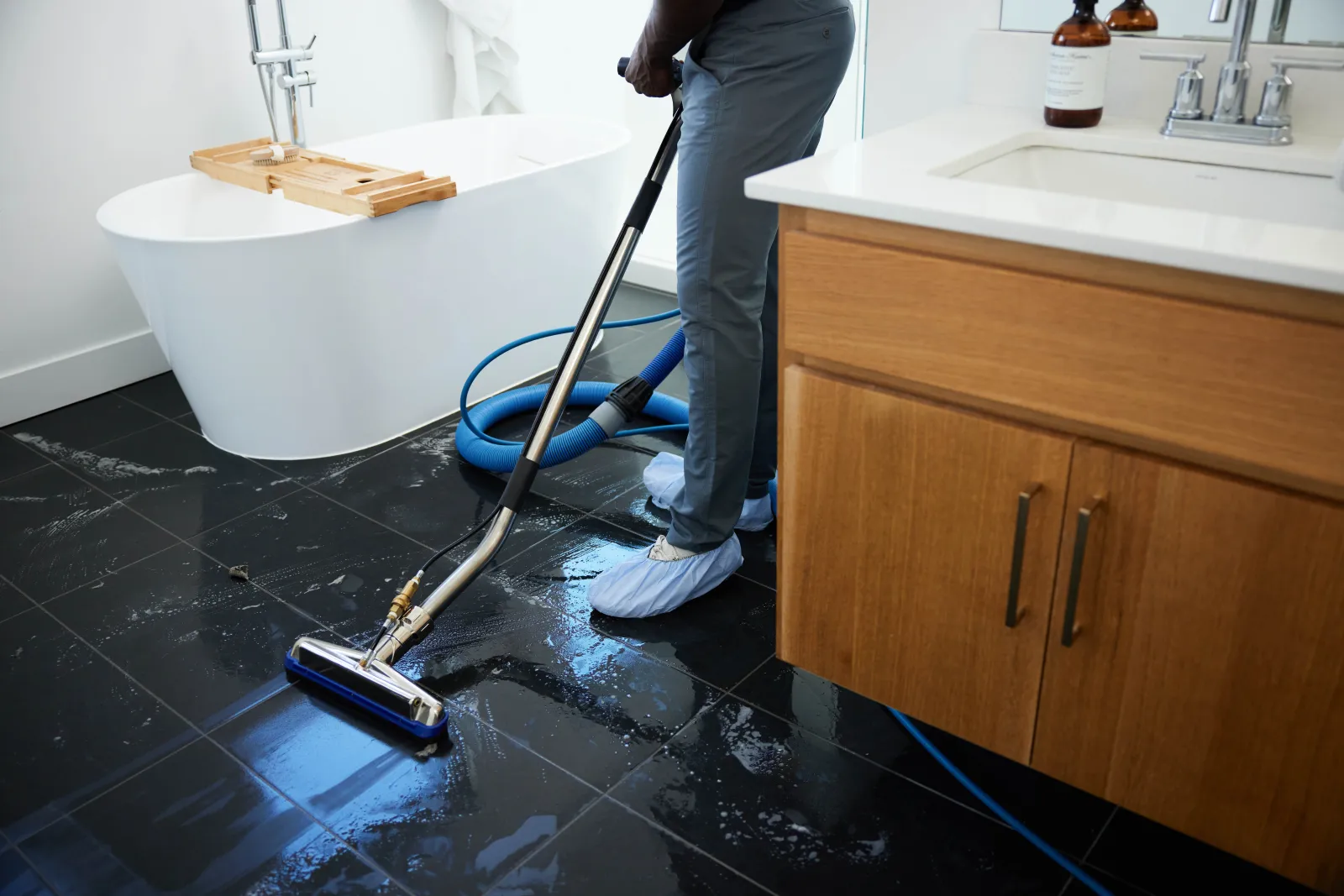
Tile Care and Cleaning: Porcelain vs. Ceramic
Both porcelain and ceramic tiles are easy to clean floor tiles. You only need water and mild soap detergent. Pay close attention to bathroom grout as it's prone to mold and mildew growth.
If you are looking for an easy and quick way to get your tile and grout cleaned, Zerorez® professionals can clean grout and tile for you.
Porcelain Tile Care and Cleaning
Vacuum or sweep the tile floor once or twice every week, depending on the traffic and number of pets and children, to remove grit that makes the glazing dull.
Mop tile biweekly using a damp mop.
These are the basics for the best way to clean polished or unpolished porcelain floor tiles.
Ceramic Tile Care and Cleaning
To remove grit, sweep or vacuum ceramic floors once or twice every seven days, depending on the number of pets and children you have or the foot traffic.
Only use a damp mop to clean the floor every two weeks.
Ceramic, unlike porcelain, is more prone to staining. Clean stains as soon as possible or avoid ceramic if your home is susceptible to stains.
Improper cleaning of either type of tile can lead to your shoes squeaking on tile or the tile being sticky after mopping.
Cost: Ceramic Tile vs Porcelain Tile
You pay more for higher-quality tile flooring.
Porcelain Tiles Cost
Their durability, high raw material cost, special manufacturing equipment, high energy manufacturing requirements, need for an expert to install, stringent testing standards and special tools for installation contribute to the high cost of porcelain installation.
Ceramic Tiles Cost
Ceramic tiles are cheaper because they're less durable, more susceptible to stains, have a higher water absorption rate, and are easy to install. You may pay approximately $3-$15 per square foot for ceramic tile installation.
Table of Comparison Between Ceramic Tile and Porcelain Flooring
| Characteristic | Porcelain Tile | Ceramic Tile |
|---|---|---|
| Temperature of firing |
2,200-2,500 °F | 1,800-2,000 °F |
| Hardness | Harder | Softer |
| Cleaning | Non-porous; easy to clean | Porous; frequent cleaning is needed |
| Application | Outdoors and indoors | Indoors only |
| Certification | Yes | No |
| Materials | Fine kaolin clay | Coarse clay |
| Cost | $2-$15 per square foot | $3-15 per square foot |
| Installation | Better done by experts | DIY-friendly |
| Rate of water absorption | Less than 0.5% | 0.5% or more |
How to Choose the Right Tile Flooring
To determine whether to choose ceramic tile or porcelain flooring, consider the installation area, cost, durability, safety, and accessibility.
If you're looking for the best tiles for shower rooms, choose those with friction or texture to mitigate the risk of slips and falls.
Porcelain is the most durable tile. It's expensive, but it's worth every penny. If a high budget is a concern, buy ceramic tiles.
Both ceramic and porcelain come in varying designs and styles. You can choose a porcelain tile because it has a through-body color.
This color isn't on the surface but baked into the tile, so it's less noticeable once the tile chips off.
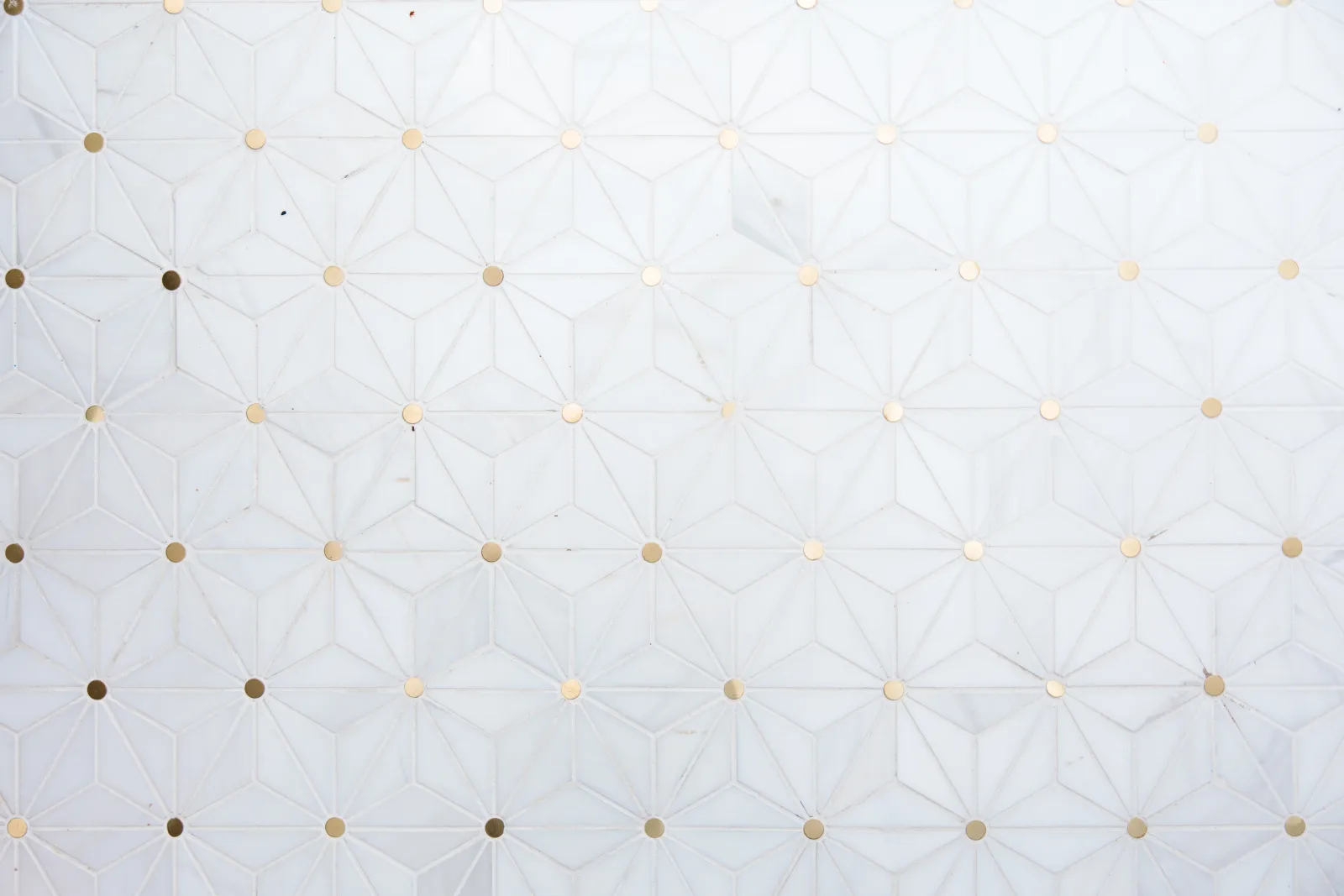
What Are the Advantages of Porcelain Floor Tiles?
Porcelain floor tiles have many advantages over ceramic tiles. They are highly resistant to stains and liquids, durable, and require low maintenance.
Highly Resistant to Stains
Porcelain is resistant to stains because it is dense and highly impervious. Stains don't seep down or set, making it easy to clean them. These characteristics make porcelain the best choice for kitchen flooring and homes with pets because it is easy to clean up pet urine, mud, and other pet-related messes.
Highly Resistant to Liquids
Porcelain is dense and less porous, making it more resistant to liquids and ideal for damp areas such as basements and bathrooms.
Low Maintenance
Porcelain has a lower porosity, making it less prone to stains. It's ideal for homes with super active kids and pets because it's easy to clean messes, making it a low-maintenance flooring. Regularly sweep and mop the tiles and thoroughly clean the grout to avoid staining.
Many Designs Available
Porcelain comes in varying colors, designs, and shapes, giving your commercial or residential flooring a gorgeous look.
You can pick the most ideal porcelain tile for your floor based on the color of your furniture, curtains, ceiling, or walls. Porcelain transforms an office or home because it mimics natural wood, stone, and other classy materials, giving it a royal feel and looks at a lower cost.
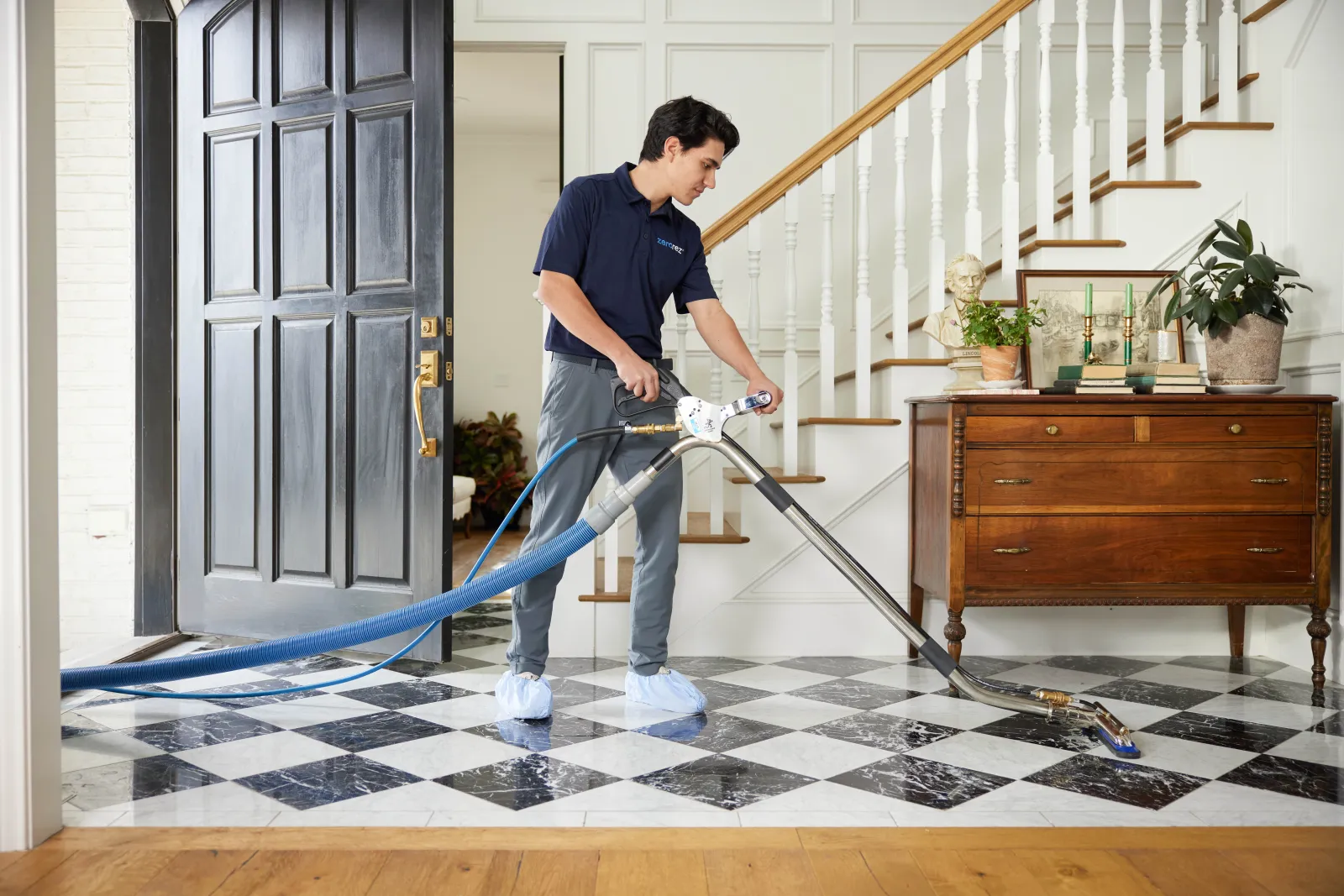
Suitable for High-Traffic Areas
Porcelain is strong and less prone to cracks, making it ideal for high-traffic areas and commercial floorings. It also withstands the pressure of heavy furniture and doesn't crack.
This flooring holds up for a long time, making it ideal for homeowners looking for the most durable tiles.
Environmental-Friendly
No harsh chemicals are used in porcelain production; only clay and other natural materials are used, lowering waste and energy consumption.
There's less impact on the environment because companies can recycle and reuse porcelain.
What Are the Disadvantages of Porcelain Floor Tiles?
There are two major disadvantages of porcelain flooring: Cost and weight.
Cost of Porcelain Floor Tiles
Since porcelain is highly resistant to liquids, cracks, and stains and is highly dense and durable, it's more expensive than ceramic flooring.
Installing porcelain requires high professionalism. It is challenging to work with and time-consuming to install, and it requires special tools to cut and shape.
The high temperatures and pressure used to produce porcelain raise the production cost, increasing the purchase cost.
Weight of Porcelain Tiles
Porcelain is denser, hence heavier. Being denser makes it last longer, but it is also hard to install, which explains why most contractors dislike it. Those who do charge a hefty amount.
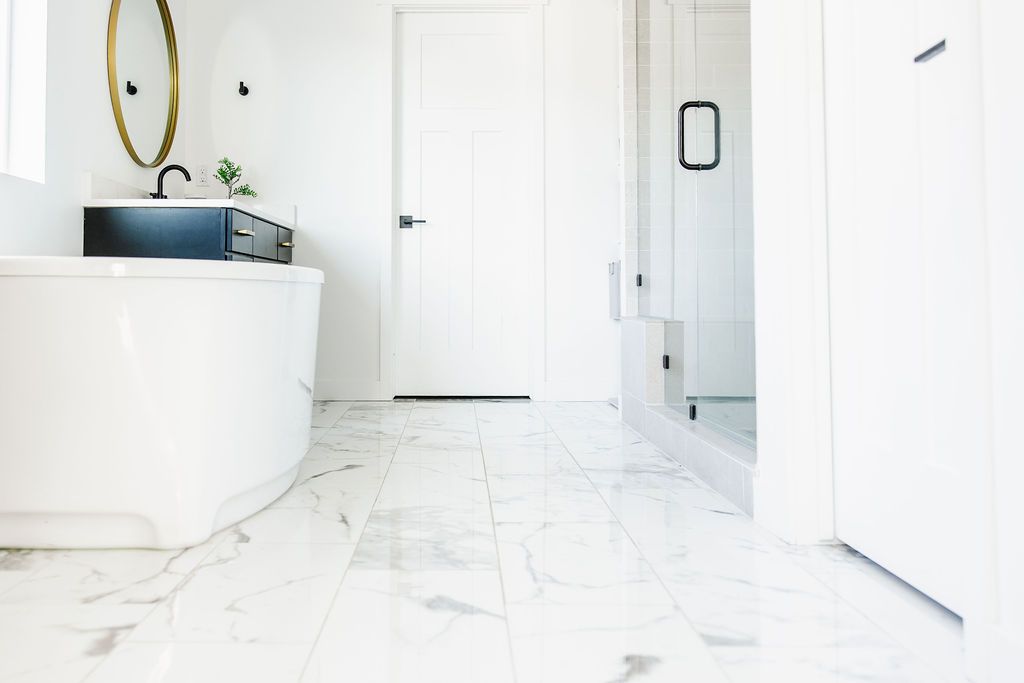
What Are the Advantages of Ceramic Floor Tiles?
Ceramic floors have several pros: They are cheaper to buy and install and come in varying designs.
Ceramic Floor Tiles Are Cheap
Ceramic flooring is lighter and less complicated to install, making it cheaper to buy and install. No special tools are needed to cut and shape ceramic tiles, as they're not as dense and hard as porcelain.
Its production is less complicated and cheaper due to lower firing temperatures. It's ideal for budget-friendly flooring, which could help lower overall construction costs.
Ceramic Tiles Are Easy to Clean
Ceramic is an easy-to-clean floor. Regular sweeping and mopping preserve its quality and make it last longer.
Ceramic Tiles Are Natural Materials
Ceramic is made from clay and other natural materials. Reduced waste and energy consumption are observed during the production of ceramics.
You can also recycle or reuse ceramic, drastically reducing its environmental impact.
What Are the Disadvantages of Ceramic Floor Tiles?
If you're looking for a durable and low-maintenance floor, ceramic shouldn't be on your list! Check out its cons below.
Ceramic Floor Tiles Are Less Durable
Ceramic is fired at a lower temperature, making it softer and easier to chip off. It is ideal for less-traffic commercial and residential flooring. If you must use or have heavy furniture, avoid moving it often, as that could cause your tiles to chip off and expose the red, white, and tan base.
Ceramic tiles are great for countertops, walls, and low to moderate-traffic floorings.
Ceramic Tiles Need Maintenance
Ceramic flooring may chip off under high traffic. You might end up spending more on repairs, maintenance, and purchase of ceramic floors than you would do to install porcelain flooring.
Which Is Stronger Ceramic or Porcelain?
Porcelain is harder, denser, and more resistant to chipping and scratches than ceramic, so it is stronger and ideal for high-traffic indoor or outdoor applications.
How to Tell if Tile Is Porcelain or Ceramic?
You can tell if a tile is porcelain or ceramic by:
- Inspecting the non-installed tiles' finish: Ceramic floors have a bumpy or semi-coarse finish, but porcelain tiles have a smooth finish.
- Inspect the installed tiles' faces (the outward or upward sides): If there is a discrepancy between the tiles' sizes, that's ceramic. If the tiles can be cut to a uniform dimension, that's porcelain.
- White or tan base: If you see a tan, red, or white base on a chipped tile, that's a ceramic tile. High-quality porcelain tiles have a consistent color from the top to the bottom.
Which Is Better: Ceramic or Porcelain Tiles?
Consider your budget, where you're doing the installation, and traffic flow to determine if ceramic or porcelain is the best choice. Porcelain is better than ceramic for a more versatile style, durability, and resistance to stains and water.
If your budget is small, traffic and humidity levels are low, and the floor or wall is not prone to stains, ceramic tiles are better than porcelain.

Zerorez Can Professionally Clean Ceramic and Porcelain Tiles
Did you know that Zerorez offers professional tile and grout cleaning services? Our customer care personnel provide a free cleaning quotation upon request.
Call or schedule your tile and grout cleaning online now.

